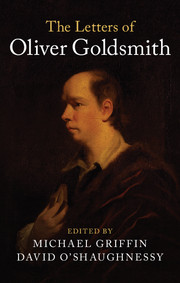60 - To Thomas Cadell, [London, 1773‒1774]
Published online by Cambridge University Press: 12 December 2024
Summary
Thomas Cadell (1742–1802), bookseller, was apprenticed to London bookseller Andrew Millar before becoming his partner in 1765. After Millar retired in 1767, Cadell took over and operated out of 141 The Strand until his death. He was noted for generous payments to authors which enabled him to publish some of the most significant volumes of his day, including many of Johnson's important works, Gibbon's Decline and Fall of the Roman Empire (1776–88), and Hester Thrale Piozzi's Anecdotes of the Late Samuel Johnson (1786) and her Letters to and from the late Samuel Johnson (1788). He was the founding member of a booksellers’ dining club which met on The Strand each month. After his retirement, his son, Thomas, and assistant, William Davies, took over the business. Cadell remained prominent in London's public life, taking on a number of civic and charitable roles, including governor of the Foundling Hospital and treasurer of the Asylum. Goldsmith's History of England was published by Thomas Davies in August 1771. Cadell brought out the second edition in 1774, having purchased the copyright from Davies.
The date of the letter is uncertain. Goldsmith was preparing the second edition of his History of England but its publication was first announced in the London Chronicle on 15 December 1774, more than eight months after Goldsmith's death.
The copy-text is the manuscript in the Bodleian Library, Oxford. It was first published by Prior in 1837. The name ‘Cadell’ has been covered in the manuscript by a mount on which ‘Nourse’ was written erroneously by William Upcott (1779– 1845), the antiquary and autograph collector, to whom the manuscript formerly belonged. The end of the note is also cut away.
Doctor Goldsmiths compliments to Mr. [Cadell], and desires a set of the history of England for correction if interleaved the better.
- Type
- Chapter
- Information
- The Letters of Oliver Goldsmith , pp. 132Publisher: Cambridge University PressPrint publication year: 2018

